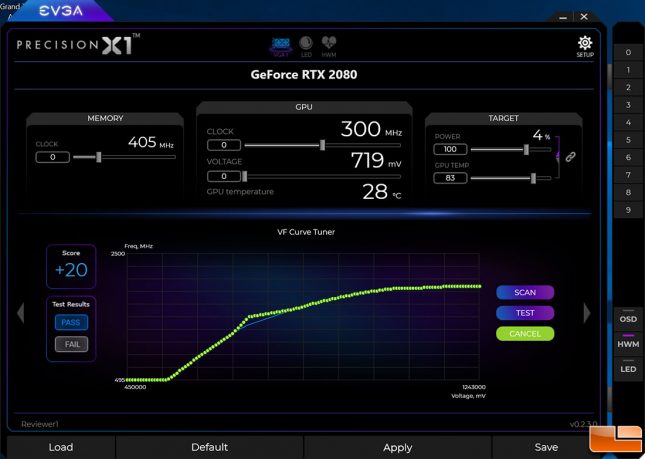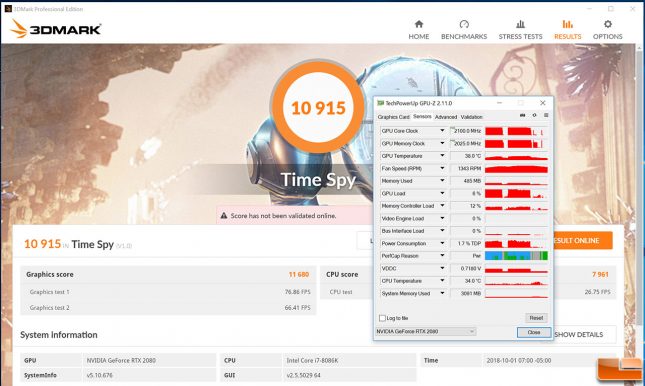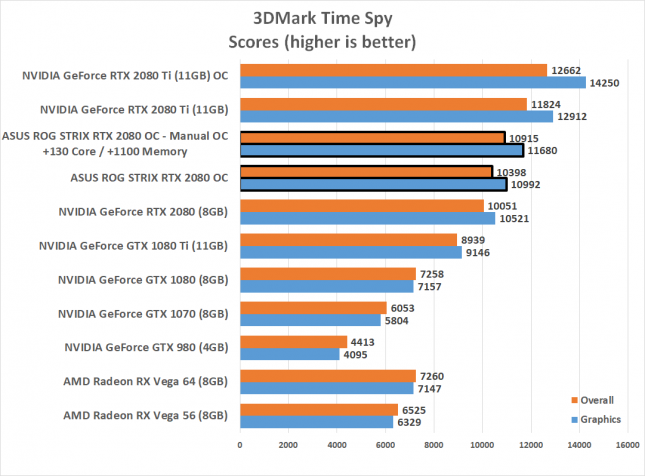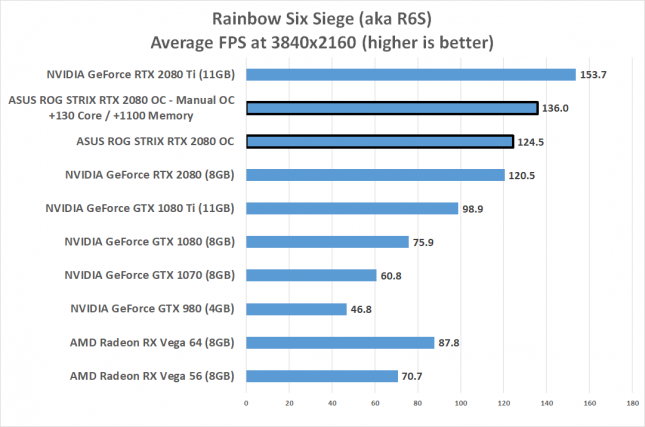ASUS ROG Strix GeForce RTX 2080 OC Video Card Review
ASUS ROG STRIX RTX 2080 OC – Manual Overclocking
Overclocking the NVIDIA GeForce RTX 2080 RTX 2080 is super simple thanks to NVIDIA Scanner. This new one-click overclocking tool uses an intelligent testing algorithm and specialized workload designed to help find the maximum, stable overclock on their cards. This process takes about 15 minutes and always you to walk away and come back to find out what a good safe max overclock could be. This eliminates trying multiple overclocks and checking stability. When NVIDIA Scanner is done, the Scanner will have found the maximum stable overclock throughout the entire frequency and voltage curve for your specific card. NVIDIA Scanner doesn’t touch the memory, so this is only for the core clock speeds.
ASUS doesn’t support NVIDIA Scanner in their GPU Tweak II utility, so we used EVGA Precision X1. ASUS is internally beta testing NVIDIA Scanner and will release a version of GPU Tweak with NVIDIA Scanner shortly. With EVGA Precision X1, the ASUS ROG STRIX RTX 2080 OC finished with an overclock of +20. We manually overclocked the STRIX 2080 OC and was able to get much higher clock speeds than this, so we stuck with manual overclocking.
We were able to run the ASUS ROG STRIX RTX 2080 OC overclocked to +130 core and +1100 memory with full stability. While gaming with these settings the core clock was hitting 2100 MHz and the GDDR6 memory was running at 16Gbps.
This brought a nice performance boost in 3DMark Time Spy up from the 10,400 point run at stock settings up to 10,900 points with the overclock. This is a 5.0% improvement in our 3DMark Time Spy results and we are less than 1,000 points away from a stock NVIDIA GeForce RTX 2080 Ti at this overclock!
In Rainbow Six Siege we saw a performance increases 9.2% on the RTX 2080 thanks to this overclock. We are pretty happy with a 5-9% performance boost from manual overclocking!
Let’s wrap this review up!




